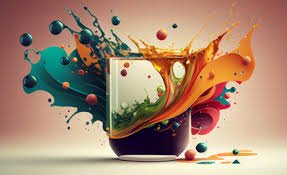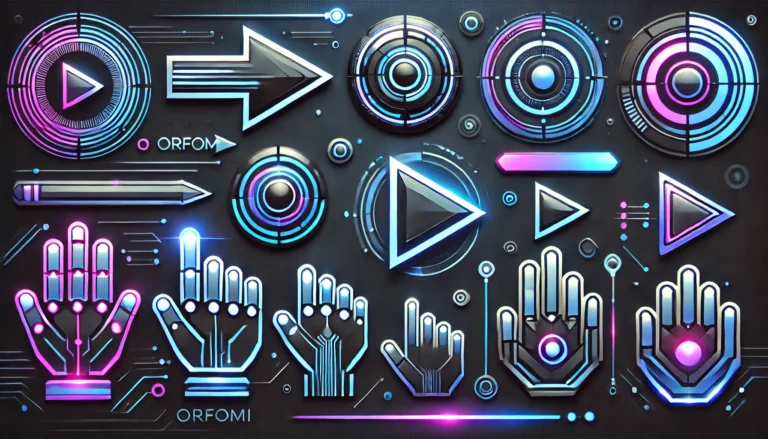https://multigrafico.com/khalil-chishtee-no-todo-el-arte-es-belleza/
Introduction
In the world of modern art, not every piece is created with beauty as its primary focus. Some works challenge our perceptions, question societal norms, and evoke emotions that are anything but beautiful in the conventional sense. This is the case with the thought-provoking creations of Khalil Chishtee, whose work is captured on the page “https://multigrafico.com/khalil-chishtee-no-todo-el-arte-es-belleza/.” Chishtee’s unique sculptures and installations explore the boundaries of beauty and ugliness, art and life, forcing us to reconsider what art really means.
Khalil Chishtee: Redefining Art’s Purpose
Chishtee is a Pakistani-American artist whose works primarily feature recycled materials, such as plastic bags, to create lifelike sculptures that speak to themes of migration, identity, and loss. His decision to use everyday materials in his work aligns with his belief that art should be accessible and reflective of real life, rather than merely an object of aesthetic pleasure.
His sculptures, seen at “https://multigrafico.com/khalil-chishtee-no-todo-el-arte-es-belleza/,” often depict human figures caught in moments of deep contemplation, stress, or struggle. These expressions of raw human emotion resonate with viewers not because they are traditionally beautiful, but because they are deeply real.
Art Beyond Beauty: The Importance of Message
One of the most compelling aspects of Chishtee’s work is how it goes beyond the surface to convey a deeper message. His art often reflects on the impermanence of life and the fragility of existence. His use of plastic, a material associated with waste and environmental harm, adds another layer of complexity to his work. Through his art, Chishtee subtly critiques modern society’s disposable culture and its consequences on both human and environmental levels.
When exploring his artwork on “https://multigrafico.com/khalil-chishtee-no-todo-el-arte-es-belleza/,” it’s clear that Chishtee’s sculptures are more than just art—they are powerful narratives that encourage viewers to think critically about the world around them.
The Power of Recycled Materials in Modern Art
The use of recycled materials in art has grown significantly in recent years, as artists like Chishtee have sought to push the boundaries of what is considered “fine art.” Traditionally, art was associated with materials like marble, oil paint, or canvas—expensive and often inaccessible to the everyday person. By using plastic bags and other waste materials, Chishtee democratizes art, making it something that anyone can create, regardless of their socioeconomic background.
The concept that “not all art is beauty” is particularly evident in this approach. While a sculpture made from plastic bags may not have the same polished appeal as one made from marble, it carries with it a weightier message about sustainability, waste, and the human condition—ideas that are central to Chishtee’s artistic vision, which can be explored further at “https://multigrafico.com/khalil-chishtee-no-todo-el-arte-es-belleza/.”
Themes of Migration and Identity in Chishtee’s Work
As an immigrant, Chishtee’s art often touches on the themes of displacement and identity. His figures, crafted from materials that are both fragile and resilient, mirror the experiences of immigrants—constantly moving, adapting, and finding ways to survive in unfamiliar environments.
On “https://multigrafico.com/khalil-chishtee-no-todo-el-arte-es-belleza/,” these themes come through clearly. His sculptures embody the tension between staying rooted in one’s culture and adapting to a new, often challenging reality. They invite viewers to reflect on their own identity, sense of belonging, and the invisible struggles many face in the process of migration.
Challenging Traditional Aesthetics
One of Chishtee’s greatest contributions to modern art is his ability to challenge traditional ideas of what is beautiful. In a world obsessed with perfection, Chishtee’s work reminds us that there is beauty in imperfection, in struggle, and in the mundane.
By presenting art that is not conventionally beautiful, as showcased on “https://multigrafico.com/khalil-chishtee-no-todo-el-arte-es-belleza/,” Chishtee forces us to confront our own biases about what we consider “worthy” of admiration. His art makes it clear that beauty is not the only measure of art’s value—sometimes, the most powerful art is the kind that makes us uncomfortable, that forces us to think and reflect.
The Emotional Impact of Chishtee’s Art
Perhaps one of the most striking aspects of Khalil Chishtee’s work is its ability to evoke deep emotion in viewers. His sculptures, though static, seem to carry with them the weight of human experience. The figures appear caught in a moment of reflection, their body language telling a story of pain, struggle, or contemplationFor viewers who encounter his work on “https://multigrafico.com/khalil-chishtee-no-todo-el-arte-es-belleza/,” the experience can be both unsettling and cathartic. His art does not offer easy answers or simple beauty—it challenges us to sit with difficult emotions, to reflect on the complexities of life, and to find meaning in the messiness of human existence.
Conclusion: The Beauty of Unconventional Art
In conclusion, Khalil Chishtee’s work as showcased on “https://multigrafico.com/khalil-chishtee-no-todo-el-arte-es-belleza/” is a testament to the fact that art does not have to be conventionally beautiful to be powerful. His sculptures, made from recycled materials, convey deep messages about identity, migration, and the human experience. They challenge viewers to rethink their definitions of beauty and to appreciate art for its ability to provoke thought and emotion.
In a world that often prioritizes aesthetics over substance, Chishtee’s work serves as a reminder that some of the most impactful art is the kind that makes us uncomfortable, that forces us to confront difficult truths. His creations may not always be beautiful, but they are undeniably important, offering viewers a chance to engage with art in a meaningful and transformative way.






